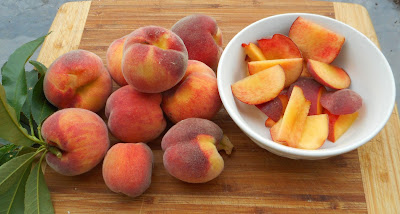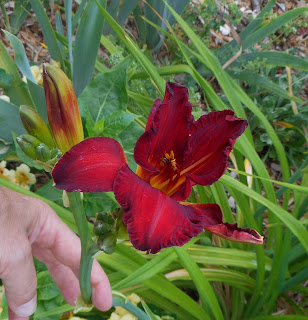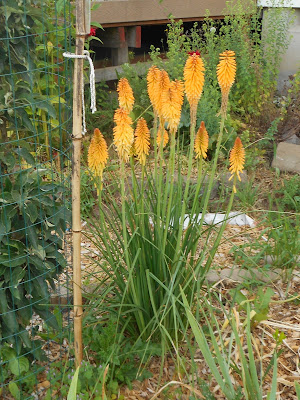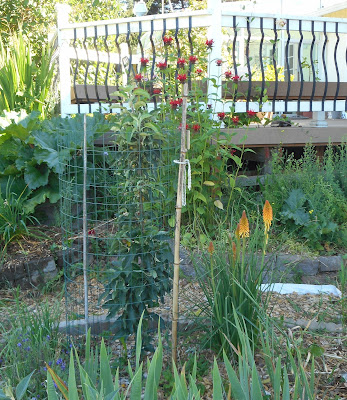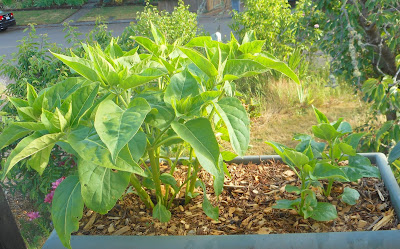 |
| Tigridia. 7.2.15 |
I bought these corms at Fred Meyer or Home Depot in one of those mixed bulb packs. The corms were small so I planted 2 packs in a large container in regular organic potting soil. I don't remember how many per pack, maybe about a dozen. That was late winter. I kept the container, unwatered, in the unheated garage until warmer weather then started watering.
There are various color combinations, variations on a theme.
The flowers last one day, like a daylily. There are several per stem.
I think these were smaller than previous corms I have bought, so some may need a year to bloom, and the rest may bloom better in a year.
The colors are the same orange / yellow / cinnamon to red that are seen in marigolds, nasturtiums, and some daylilies.
I cut off the first flower after blooming, thinking that would encourage future blooming. After reading the seed info below, I think I will encourage seed formation. For the flower today, I cut off a stamen and used it to paint pollen onto the pistols.
According to this web site, fast to grow from seed, and grown by Aztecs 1000 years ago. According to Wikipedia, native from Mexico to Argentina, and"its roots are edible and were eaten by the Aztecs of Mexico who called it cacomitl and its flower ocēlōxōchitl "Jaguar flower". I can see the Jaguar name better than the Tiger name. According to gardenguides.com, "native to Central and South America, and there is evidence that the plants were cultivated by Aztecs around 1,000 years ago. Mexican tribes have roasted and eaten its corms for centuries, which taste a bit like chestnuts. The plant was relatively unknown to Europeans, until its arrival in 1796. Aztecs called the plant cacomitl, and the flower was called oceloxochitl." For future reference, the same sigte describes growing tigridia from seeds as follows: seeds... are quite large and may require soaking at first. Sow indoors under a bell cap or in a propagator... [or] in a seed tray, which has a lid to preserve moisture. When seedlings are about two to three inches high, they can be moved to larger pots and put in a cold frame to harden. The plants can remain until May, when they should be transplanted into the garden soil." From a PBS forum, "The ancient name in Nahuatl (the language of the Aztecs and other indigenous Mexicans) for Tigridia pavonia is : "Ocelotlxochitl". This name means "ocelot-flower". ("Xochitl" is the generic term for flower, and is pronounced, "zo-sheel".) ...the plant gets its name from ocelots (spotted) and not tigers (striped). ". In Dave's Garden website, it is stated the seeds can be planted outdoors in fall. Maybe in California, I guess not here. According to Pacific Bulb Society, Tigridia pavonia need a dry winter dormancy, but survive in British Columbia in a rainy winter - here too but not thriving. Some have flowered 2 years after starting from seeds. And, actively growing plants benefit from fertilizers.
 |
| Tigridia. 7.2.15 |
 |
| Tigridia. 6.28.15 |









